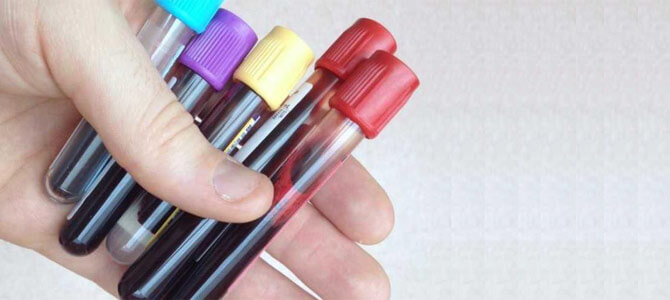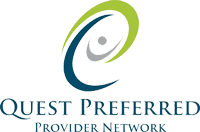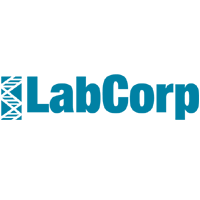
STD Testing Centers
Union, UT
Same Day Service
No Doctor Visit Or Insurance Required
Accredited Drug Testing provides multiple STD tests at our Union, Utah testing centers for individuals who may have been exposed to or showing symptoms of an STD. Millions of Americans have some form of an STD and our testing is provided in a confidential manner. STD tests at our Union, UT locations may be ordered for one specific type of test or you may order a multiple panel screening which includes several STD tests. Same day service is available, and we have multiple Union, Utah STD testing centers within minutes of your home or office. All testing information and results are confidential.
7001 S 900 E STE 210 0.4 miles
MIDVALE, UT 84047
76 E 6790 S 1.0 miles
MIDVALE, UT 84047
234 E WINCHESTER ST 1.1 miles
MURRAY, UT 84107
7309 S 180 W 1.3 miles
MIDVALE, UT 84047
7998 S 1300 E 1.4 miles
SANDY, UT 84094
8074 S 1300 E 1.5 miles
SANDY, UT 84094
5911 S FASHION BLVD 1.6 miles
MURRAY, UT 84107
201 E 5900 S Ste 100 1.7 miles
MURRAY, UT 84107
1950 FORT UNION BLVD 1.9 miles
SALT LAKE CITY, UT 84121
925 EXECUTIVE PARK DR STE C 2.4 miles
SALT LAKE CITY, UT 84117
Testing services include physician referral, collection of the specimen, complete laboratory analysis and confidential and secure result reporting.
** Patients who have high insurance deductibles, co-pays or do not have insurance can access important health and wellness testing by scheduling/Ordering a confidential clinical test through Accredited Drug Testing By Phone or On-line.
The process to schedule a lab/blood test in Union, Utah is fast and easy!
Step 1: Schedule/Order your test online at www.accrediteddrugtesting.com/lab-test-order or call our scheduling department at 800-221-4291. You do not need to visit a doctor to order a test.
Step 2: Provide confidential and secure patient information including the type of test, zip code of the location area you would like to take the test and payment information (self-pay).
When completed you will receive a patient registration form by email where you can immediately proceed to the testing location in the Union, Utah area. Same day service is available and your registration pass will have the testing location address and hours of operation.
Step 3: After your test has been analyzed by one of our nationally CLIA and FDA certified laboratories (Quest/ LabCorp) your results will be sent through a confidential, secure and encrypted portal to the email address that you provided. In the event that the test is non-negative, abnormal or other circumstances, a consultation with the referring physician is available.
STD Definitions/Descriptions
STD stands for Sexually Transmitted Disease, also known as STI or Sexually Transmitted Infection, meaning that these diseases are most often, but not exclusively, spread by sexual intercourse.
STDs are passed from one person to another through sexual activity which can include vaginal intercourse, anal intercourse and/or anal intercourse. Though not as common, STDs can also be transmitted through intimate physical contact such as heavy petting.
STDs do not always cause symptoms, or they may only cause mild symptoms. This makes it very possible to have an infection and not know it. Therefore, if you are sexually active it is important to get tested at least once a year. You will find the most common types of STD and STI testing below.
HIV - HIV is a sexually transmitted disease (that can be spread outside of sexual contact) known as Human Immunodeficiency Virus (HIV). It is the virus that causes AIDS and interferes with the body's ability to fight infections.
Herpes 1 and 2 - Herpes is an infection caused by HSV (herpes simplex virus). This virus affects the external genital, anal region, mucosal surfaces and skin in other parts of the body. There are two types of herpes simplex viruses: HSV-1 9 herpes type 1, or oral herpes) and HSV-2 (herpes type 2, or genital herpes).
Gonorrhea - Gonorrhea is a common sexually transmitted disease that can cause infections in the genitals, rectum and throat for both men and women. If untreated it can cause serious health issues, however, if it is caught in time it can be cured with the right medicine.
Chlamydia - Chlamydia is a common sexually transmitted disease that may not show symptoms. However, those that do show symptoms may experience genital pain and discharge from the vagina or penis. If left untreated it can cause damaging effects to the woman's reproductive system.
Syphilis - Syphilis is a sexually transmitted disease that develops in different stages. The first stage involves a painless sore on the genitals, rectum or mouth. After that initial sore heals, the second stage is a rash. Then, there are no symptoms until years later which is the final stage - damaged brain, nerves, eyes and/or heart.
Many STDs can be easily cured with medication, so you can just finish your treatment and get on with your life. And even though some STDs can't be cured, there are lots of ways to treat your symptoms and prevent you from giving your STD to anyone you have sex with.
People with STDs can be in relationships, have sex, and live totally normal lives. Most people get an STD at least once, and millions are living with STDs now. Having an STD is nothing to feel ashamed of, and it doesn't mean you're "dirty" or a bad person , it just means you're a pretty normal human who got an infection. The reality is that STDs can happen to anybody who's ever been sexual with someone, which is almost everybody on earth. And a few STDs can be spread in non-sexual ways, too.
Accredited Drug Testing can schedule your STD test at an Union, Utah testing facility in a confidential, friendly and professional manner. Call us today!
Handy Resources
Comprehensive Online Resources for Drug Testing
- National Institute on Drug Abuse (NIDA)
Provides comprehensive information on drug testing and its role in substance use disorder treatment.
- FDA: Drug Testing
Explains the FDA's role and regulations concerning drug testing for consumers.
- PDR.net
Provides detailed drug information and safety updates through a mobile-friendly platform.
- BeSafeRx - FDA
Resource by the FDA to help consumers identify and choose safe online pharmacies.
- SAMHSA: Drug Testing Resources for the Workplace
Resources and guidelines for drug testing in the workplace.
- Drugs.com
Provides drug information, side effects, and interactions for consumers and professionals.
- Drug Abuse Screening Test (DAST)
Online version of the DAST to help individuals assess whether they have a drug problem.
- Merck Manuals
Consumer-friendly medical resource providing comprehensive information on a wide array of health topics, including drug testing.
- SAMHSA Store
Provides access to resources and publications on substance use prevention and treatment.
- National Association of Boards of Pharmacy (NABP)
Information on state boards of pharmacy and regulations, including those related to drug testing.
- CDC: Workplace Health Promotion
CDC's resources on substance use and drug testing in the workplace.
- Mayo Clinic: Drug Testing
General information about the procedures and types of drug tests.
- MedlinePlus: Drug Testing
Offers information about various drug tests and their uses in medical diagnosis and treatment.
- University of Rochester Medical Center Health Encyclopedia
Provides a detailed entry on drug testing, including how tests are conducted and what they detect.
- World Health Organization (WHO)
International guidelines and information on public health, including substance abuse and drug testing.
- Healthline: Drug Testing
Consumer health site offering information on how drug tests work and what they look for.
- WebMD: Drug Testing
Provides a patient-oriented overview of drug testing and its purposes.
- National Center for Biotechnology Information (NCBI)
Provides a vast database of scientific studies, including research on drug testing and its effectiveness.
AI Overview
Overview of STD Testing
Sexually Transmitted Disease (STD) testing is a critical component of healthcare, essential for detecting and managing infections transmitted through sexual contact. STD testing is recommended for anyone who is sexually active, as early detection and treatment can prevent serious health consequences and limit the spread of infections to others.
Importance of STD Testing
Regular STD testing is vital because many infections often do not show symptoms immediately, or symptoms may be mild and go unnoticed. Untreated STDs can lead to severe health issues, including infertility, complications during pregnancy, and increased risk of acquiring other STDs, including HIV.
Common Types of STD Tests
- HIV Testing: Performed through blood or saliva samples to detect the presence of HIV antibodies or antigens.
- Chlamydia and Gonorrhea: These bacterial infections are typically tested via urine tests or swabs of the genital area.
- Syphilis: Diagnosed through blood testing, which can detect antibodies produced in response to the infection.
- Herpes: Although no cure exists, testing for herpes involves blood tests or swabs from an active outbreak.
- Hepatitis B and C: Blood tests are used to diagnose these viral infections, which affect the liver.
When to Get Tested
- After Unprotected Sex: It's advisable to get tested if you've had unprotected sexual contact with a new partner or multiple partners.
- If Symptoms Occur: Symptoms such as sores on the genitals, pain during urination, or unusual discharge are indications for testing.
- Regular Screenings: Annual or more frequent STD testing may be recommended for active individuals, especially if they have multiple partners.
What to Expect During STD Testing
The testing process is straightforward, involving a physical examination, the collection of samples (blood, urine, swabs), and sometimes a visual inspection of affected areas. Confidentiality is a cornerstone of STD testing, ensuring privacy and discretion in handling patient information and test results.
Benefits of STD Testing
- Early Detection and Treatment: Allows for timely treatment that can effectively manage symptoms and prevent transmission to others.
- Peace of Mind: Provides reassurance and helps maintain your health and the health of your partners.
- Prevention of Complications: Reduces the risk of the long-term health issues associated with untreated STDs.
Understanding the importance of STD testing and participating in regular screenings can significantly impact personal health and public health outcomes. It is an essential step in responsible sexual health management.
"When You Need A Test, Choose The Best"
AccreditedDrugTesting.Com
800-221-4291


Fort Union, historically Union, is a major commercial area and an early settlement in the Salt Lake Valley of Utah that is now split between the municipalities of Midvale, Cottonwood Heights, and Sandy. The fort after which the area was named was built early (1853) in the Salt Lake Valley's post-1847 history at a strategic point where escarpments on either side of the Little Cottonwood Creek valley create a narrow gateway to the upper valley and Little Cottonwood Canyon beyond. The effects of geography on travel through the area have also contributed to the area's much more recent success as a retail and employment destination.
The community of Union was first settled in 1849 by Jehu Cox. There were 8 families in the settlement that year. Silas Richards was appointed Bishop and organized a ward. By the following year the little settlement doubled in number. 1850 Silas Richards taught the first school of 30 to 35 scholars and he continued to do so for several winters. Union was first called Little Cottonwood, then South Cottonwood. The defensive Union Fort was founded to help secure the area for the early farmers living nearby, and it also provided security for shipments of granite (or quartz monzonite) from the mouth of Little Cottonwood Canyon for the construction of the Salt Lake Temple. 1853, in consequence of Indian depredations and trouble, it was thought to be expedient to build a fortification and live inside the walls. The elected site for the village was four rods square. The wall which had port holes was built of rock, clay and adobe twelve feet high around the sides. Twenty-three families lived inside in an adobe house. "We called our town Union." It was laid off in lots and streets. The cost was great. A large adobe school house was built in the center of Union to be used for school and meetings. Around noon July 24th, 1857 news was reported that troops were coming from the states, sent by the general government. "It was the first tidings of war." The week of November 16th 1857, Twenty [men] from Union (joined about 1500 in the mountains) to, "check the advance of our enemies who were threatening to exterminate us from the earth." February 1858 a great portion of the inhabitants of Union were plagued with a violent cough and cold, or influenza. Reportedly the disease prevailed in Salt Lake City and throughout the country. March 22nd 1858 orders were given to move South because of the advancing army. By May 27th an encampment of some 40 families from Union formed four miles south of Payson (about 43 miles south of Union). By July an agreement of peace had been entered into and families returned to Union. The fort was located near the modern intersection of North Union Avenue and 1000 East Street. The most visible remnants of this era are the old preserved Jehu Cox house (moved from its original location and now used as a shop), about a block north of North Union Avenue in an area that is now a large parking lot, and a historic marker at the site of the fort. The pioneer cemetery for the settlement is also preserved, but it is about a half mile southeast along Creek Road. Until the late 20th century, the Union Fort area remained a local center, but never had a large population and remained nearly rural. The name eventually was altered to "Fort Union".
The three most important roads in Fort Union are Utah State Route 71, 1300 East Street, and Fort Union Boulevard. For most of their length (they both run nearly the full length of the Salt Lake Valley), State Route 71 and 1300 East are parallel north-south roads running more than half a mile apart. In Fort Union, however, they swing closer together: 1300 East swings west to follow the ridge line of the escarpment south of Little Cottonwood Creek and State Route 71 swings east (from 700 East to 900 East) following the East Jordan Canal's curve into the lowlands around Little Cottonwood Creek. Fort Union Boulevard is an east-west road that curves around the northern Fort Union area on its way from Interstate 15 to Big Cottonwood Canyon.
Other roads around Fort Union include 1000 East Street, Creek Road, Union Park Avenue, and (nearby) Interstate 215. 1000 East runs due south between State Route 71 and 1300 East, Creek Road is the historically important route along the bottom of the Little Cottonwood Creek Valley, and Union Park Avenue was built to connect Fort Union to its exit on I-215 (about a third of a mile north of Fort Union Boulevard). Unlike most of the Salt Lake Valley, which uses a loose grid system, the roads entering the Fort Union are essentially radial; clockwise, starting from the north, the locally-radial roads are: Union Park Avenue, 1300 East, Creek Road, 1300 East, 1000 East, State Route 71, Fort Union Boulevard, and State Route 71.


